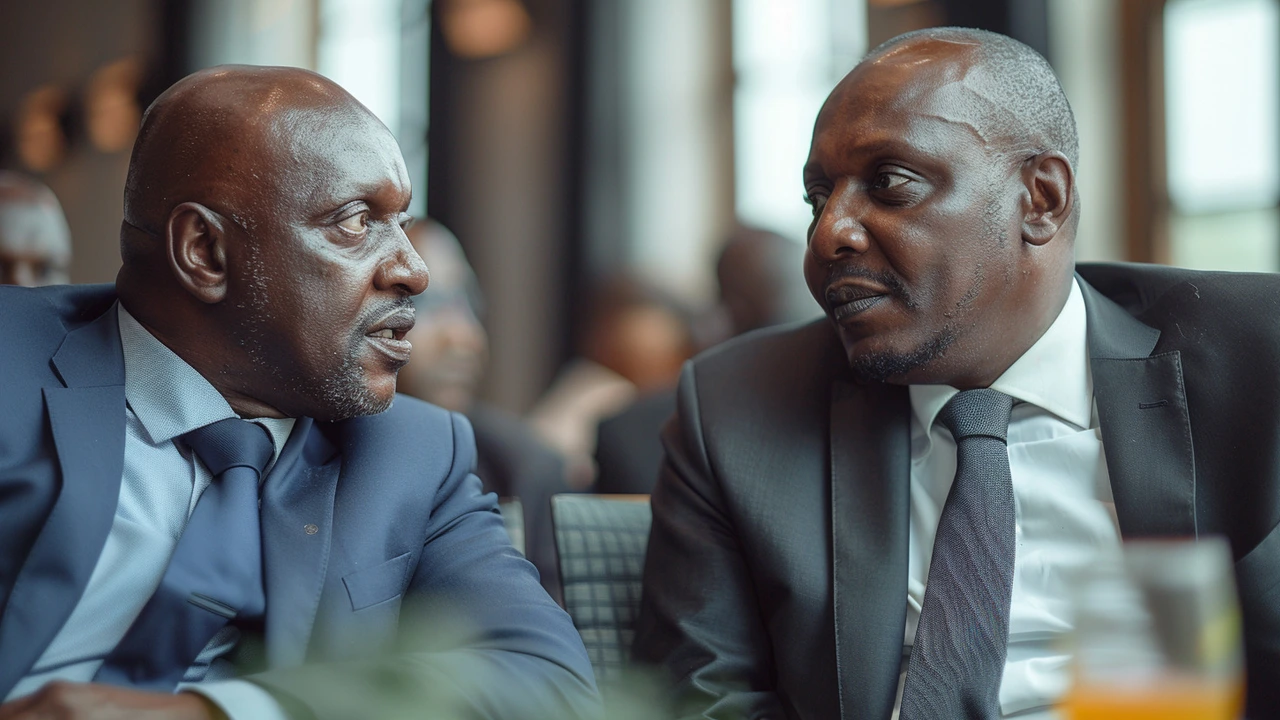Limuru III Meeting Sheds Light on Kuria, Gachagua Rivalry in Mount Kenya Political Dynamics
17 May, 2024Limuru III Meeting Exposes Kuria, Gachagua 'Rivalry'
The tension surrounding the Limuru III meeting, set to address the Mount Kenya region's political and economic concerns, has taken a dramatic turn, highlighting an apparent rivalry between Public Service Cabinet Secretary Moses Kuria and Deputy President Rigathi Gachagua. Kuria recently spoke to Citizen TV, arguing that the meeting's agenda is rendered somewhat moot considering the significant positions held by Mount Kenya representatives in the current government.
Moses Kuria contends that it is disingenuous to use the Limuru III meeting as a platform for airing grievances. He emphasized that the Mount Kenya region already boasts individuals in key governmental roles. Alongside Kuria, Deputy President Rigathi Gachagua, Majority Leader Kimani Ichung’wah, Finance Committee Chairman Kimani Kuria, and Budget Committee Chairman Ndidi Nyoro are all from Mount Kenya, equipped with the authority to address the region's issues.
Characterizing the Limuru III meeting as a disguised tribal gathering, Kuria implied that it could foster unnecessary division within an already represented community. He went further to insinuate that the meeting's orchestration was a deliberate act by an unnamed leader with prior experience in provincial administration. Many interpret this as a veiled reference to DP Gachagua, suggesting underlying conflicts between the two leaders.
Kuria's criticisms extend to Deputy President Gachagua's insinuations that as the region's most senior leader in the government, all issues pertaining to Mount Kenya should be directed to him. He challenged this notion, underscoring that the leaders were elected by the people to solve regional problems directly, without the need to funnel concerns through higher administrative hierarchies.
The Limuru III meeting has emerged as a critical flashpoint due to its convening by primarily opposition-leaning politicians from the Mount Kenya region. The lineup includes notable figures such as Martha Karua, Jeremiah Kioni, and former Laikipia Governor Nderitu Mureithi. The meeting aims to discuss and strategize around the region's economic and political well-being, a topic that remains of paramount importance to the local populace.
Moses Kuria's Stand on Regional Issues
Moses Kuria's stance is rooted in his belief that the existing leadership, including himself, should leverage their influential positions to address the challenges faced by Mount Kenya. By spotlighting the roles held by leaders from the region, Kuria aims to dismiss any claims of neglect or marginalization, arguing that sufficient representation exists within the higher echelons of government.
His remarks come at a time when the political landscape in Kenya is rife with complexities. Leaders from various regions are striving to secure a place for their communities in the national discourse. For the Mount Kenya region, characterized by its economic significance and substantial voter base, the need for strong, united representation is more pronounced than ever.
Kuria’s direct approach contrasts with what he perceives as Gachagua’s hierarchical method of problem-solving, which involves escalating issues to a central figure. This stark difference in leadership style is at the heart of their rivalry, reflecting broader questions about governance and political strategy within the region.
Economic and Political Implications
The Limuru III meeting is expected to dissect a range of economic and political concerns. Economically, the region is grappling with challenges such as agricultural productivity, trade barriers, and employment opportunities. Politically, ensuring unified representation while addressing internal conflicts remains a challenge. The involvement of opposition-leaning politicians adds another layer of complexity to these discussions.
Mount Kenya has historically been a stronghold in Kenyan politics, often playing a decisive role in national elections. The current discord among its leaders could either foster a period of introspection and reformation or deepen existing divides, affecting the region's influence on the national stage.
Martha Karua, Jeremiah Kioni, and Nderitu Mureithi, along with other leaders, represent a faction within the region that seeks alternative pathways to addressing these concerns. Their opposition stance, while controversial, highlights the diverse political ideologies present within Mount Kenya.
The Role of Community Meetings
Community meetings, such as Limuru III, serve as a critical forum for grassroots engagement, allowing residents and leaders to voice concerns and propose solutions. However, the efficacy of such meetings is often questioned when political rivalries overshadow the agenda. Kuria’s perspective underscores this dilemma, pointing to the potential misuse of these platforms for political maneuvering rather than genuine problem-solving.
Despite these challenges, the significance of these gatherings cannot be understated. They offer a glimpse into the current sentiment within the region and provide a stage for leaders to reaffirm their commitment to their constituents. For Kuria and Gachagua, the Limuru III meeting represents a microcosm of the broader political dynamics at play within Mount Kenya.
Future Prospects for Mount Kenya
Looking ahead, the direction in which Mount Kenya’s political leaders steer their discourse will have far-reaching implications. The focus must remain on addressing the pressing economic challenges and ensuring that the region's significant potential is realized. Unity among the leaders will be crucial in navigating the complexities of regional politics and maintaining Mount Kenya’s influential role in national matters.
Whether the Limuru III meeting will serve as a catalyst for positive change or be marred by political rivalries remains to be seen. However, the discussions and outcomes will undoubtedly shape the region’s future and set a precedent for how community concerns are addressed in the political arena.
In conclusion, the unfolding events surrounding the Limuru III meeting reveal a deeper narrative about leadership, representation, and regional politics in Kenya. As Moses Kuria and Rigathi Gachagua continue to navigate their roles, the Mount Kenya region watches closely, hopeful for solutions that will drive economic growth and political stability.

 by
by